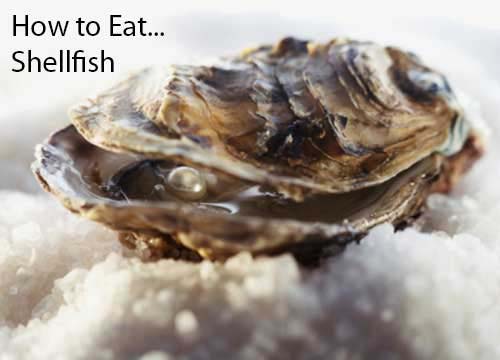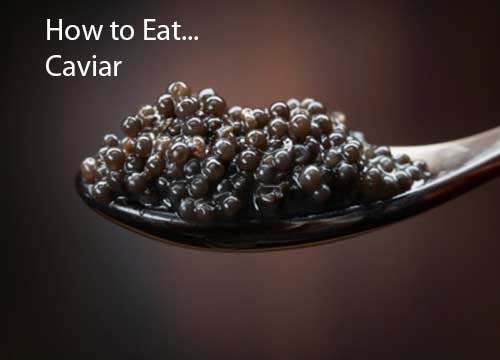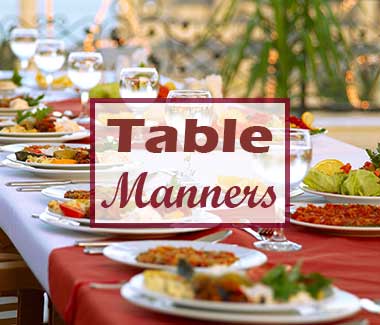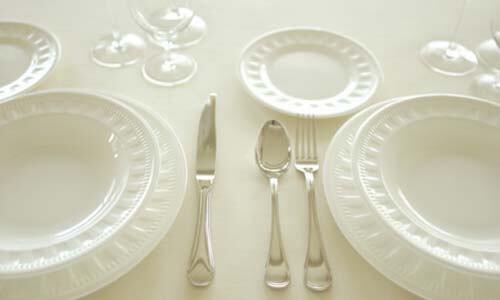Philippines Dining Etiquette
international dining etiquette
The typical Philippine diet revolves mainly around the local foods, especially vegetables. pork and seafood, and rice and noodles. Filipinos are also very familiar with Western foods, especially fast foods, and the diet of most today is a mixture of all these influences. Westerners familiar with Spanish-influenced cuisine will recognize the Latin-based menudo-type stews, the Cuban-style pork dishes, the tapa-like appetizers, but all with native ingredients of Asian and Polynesian origin. On top of this, add the American hamburger, and other types of fast food (which, in all fairness, are found most everywhere around the world), and you have a sense of Filipino cooking. If you are hosting a Filipino in the United States, they will be very comfortable with the local restaurants you choose, but will be especially thrilled if you can locate an authentic Philippine restaurant. If you are with Chinese Filipinos, dine with them at a good Chinese restaurant, whether in the Philippines or abroad: a Chinese banquet is not inappropriate (for a description of a typical one, please see the dining section in the chapter on China).
Breakfast is served from about 7:30 to 9 A.M., and usually consists of tea or coffee and rice; the latter is served either as a porridge-type cereal that can be flavored with any number of ingredients (nasi gorang), with eggs in a variety of styles, or with pickled vegetables. Tea may be drunk plain or with lemon, cream, milk, or sugar.
Lunch is traditionally the main meal of the day, and even today, in busy cities, it can still be an elaborate affair with several courses-or it can be a simple noodle dish or fast food bolted down in a matter of minutes. Lunch is served from about noon to 1 and consists of meat, fish, and/or vegetables, served with rice. Many dishes can be steamed, stir-fried, or boiled in a variety of different ways, either simply or more elaborately. Lechon, or pork, is usually roasted or barbecued, and is a very popular meat. You will see adobo, a spice, just about everywhere. Fish sauce and fish paste are available with most ethnic Philippine foods, and have very pungent flavors: start out carefully. Filipinos enjoy sweet pastries, so a very sweet dessert of fruits, pudding, or cake is usually available for every meal. Typically, the drinks served with lunch and dinner are soft drinks, beer, and/or tea or coffee.
Dinner is served from 6 P.M. on, with 7:30 P.M. the customary late time. Even if the main meal of the day was lunch, dinner is only slightly lighter-this is often the case with families at home. The dinner menu is often similar to that of the more formal lunch. If alcohol is being served, predinner drinks may begin with beer or rice wine, then move on to beer during the meal, and end with a sweet wine and/or coffee or tea. Western liquors are served in upscale restaurants and at business dinners.
Seafood is very common everywhere. as are preserved vegetables and rice dishes, mixed often with coconut pork. and chicken. Restaurants representing various Asian cuisines abound in Manila. There are a few unique Philippine dishes that you will probably be encouraged to try: one of them is balut, which is a cooked egg with a half-developed chick or duckling inside.
The most common alcoholic beverage is beer, generally served cold. Because you must never pour your own drink (be it beer or tea), you must always be alert throughout the meal as to whether your neighbor's cup or glass needs refilling. If it is less than half full, it needs refilling; alternately, if yours is less than half full, your neighbor is obliged to refill it. If he or she does not, do not refill it yourself, for this will cause them to lose face: instead, diplomatically indicate your need by pouring a little more drink into your neighbor's glass, even if it doesn't really need it.
What to do if you don't drink alcohol? This is usually not a problem, since not everyone does, and fruit juices and soft drinks are very popular.
Dining etiquette for toasts. If you are the honored guest you will be expected to make a toast, usually soon after the host does or at the end of the meal, just before everyone departs. An appropriate toast is to the health of the host and all those present, and to the prosperity of the business under discussion.
Table Manners
Chopsticks are used to eat Chinese food (for more on chopstick use, see the chapter on China earlier in this book). Otherwise, forks, spoons, and knives are used with Philippine and Western food. In some Philippine restaurants (the more authentic and usually downscale places), no utensils at all are used. Avoid using your left hand for any kind of eating, especially if you are eating directly with your hands and not using utensils.
What do you do when no utensils are offered? Why, eat with your fingers, of course! Many think it makes the experience more fun, maybe because you're adding an extra sense to an already very sensory experience: the sense of touch. This food is known as "banana-leaf" food: wonderful vegetarian or meat curries, served with rice and sauce on a large banana leaf. No plates, no forks, no spoons, no chopsticks. You reach into the rice, take some with your fingers, gently roll it between your index and middle fingers and thumb (not your palm!) into a kind of self-sticking ball, dip it into the sauce on the banana leaf, mix it with a vegetable or a piece of chicken, then pop the whole thing in your mouth. Here are some other things to note about eating in such restaurants.
Wash your hands before you sit down to eat. Many banana-leaf restaurants have washrooms and sinks out in the open specifically for this purpose. (However, you may want to wash your hands with bottled water at the hotel first, since the water at the restaurant may be more hazardous to your health than the germs already on your hands!) You will also need to wash you hands again at the end of the meal, especially after eating the saucy dishes, since you've probably got a good bit of it running down your arm. Don't worry, it's to be expected: don't dress up if you're eating banana-leaf style.
Dining etiquette for using your hands. Use your right hand when picking up and eating food. Keep your left hand at your side. Do not place your left hand on the table, and do not pass food with your left hand, as the left hand typically is considered the "unclean" hand in Muslim tradition, and many banana-leaf restaurants are Muslim estab¬lishments.
If you absolutely cannot eat without some kind of utensil, it's usually all right to ask for spoons in such establishments. The poprietors are more than pleased to accommodate Westerners.
Dining etiquette for eating the last of the food. Do not take the last bit of food from a central serving plate if there is one (more often than not, Philippine meals will be individually served); that means there will be none left in case someone else wants more. Also, a sauce may be mixed with the rice, and the main dish may be eaten with the rice.
Dining etiquette for using toothpicks. Toothpicks are often used at the end of the meal. The best way to handle a toothpick is to work away with one hand, while keeping the other hand in front of it over the mouth, as a sort of mask. If you cover the working hand this way, you can join in the toothpick session in public at the end of the meal with the best of them! Just never do it walking down the street: that's simply not done.
Dining etiquette for smoking. A word about smoking: it is ubiquitous throughout the Philippines. Usually, you do not smoke at the table until the meal is over.
Dining etiquette for seating. The most honored position is at the head of the table, as in the western European style, with the honored guest(s) sitting to the right of the host (and hostess):
If there are couples, the honored man sits next to the hostess, and the honored woman sits next to the host. (Spouses are usually not invited to business meals, though, and most formal meals in restaurants are business meals: do not ask if your spouse can join you; it will embarrass your Filipino colleague into doing something that is uncomfortable for him.) The honored guest sits on the side of the table farthest from the door if possible. (At business meetings, the key people sit in the middle, flanked on either side in descending order by their aides, with the least important people sitting at the ends of the table farthest from the middle, and closest to the door; the arrangement is mirrored on the other side, because the rules of hierarchy demand that everyone must be able to speak with their opposite peers and those who rank below, but those below cannot speak with those above.) Because many tables are round, a curious situation often develops: the least important person from one side ends up sitting next to the host or most important person on the other side. (This is usually not an issue at business meetings, where tables are more often rectangular.) If women are present, they will probably be given the honored positions first, although practically speaking there will be far fewer women.
Refills and Seconds
You will always be offered more food. Leave a bit on your plate if you do not want more food. You will be implored to take more two or three times, in the form of a little ritual. The game is as follows: first you refuse, then the host insists, then you refuse again, then the host insists again, and then you finally give in and take a little more. If you really don't want more, take very little and leave it on your plate. You may always have additional beverages; drink enough to cause your cup or glass to be less than half full, and it will generally be refilled. A reminder: never refill your own glass; always refill your neighbor's glass, and he or she will refill yours.
Restaurant Etiquette
Do not begin to eat or drink until the oldest man at the table has been served and has begun. It is appropriate to thank the host at the end of the meal for the fine food.
In informal restaurants, you may be required to share a table. If so, do not force conversation: act as if you are seated at a private table. Waitstaff may be summoned by making eye contact; waving or calling their names is very impolite. The business breakfast is unknown in the Philippines. The business lunch is very popular, as is the business dinner. Both may be good times to discuss business, but let your Philippine associates take the lead on this: if they bring up business, then it's okay to discuss it.
Etiquette in a Filipino Home
When invited to a Philippine colleague's home for a formal meal, you will be told where to sit, and there you should remain. It is a great honor to be invited into a Philippine home, and Filipinos may be quick to invite you, as a Westerner, into theirs. Most middle-class households have servants: be aware that they may have prepared the food, not the hostess.
Your spouse may be invited to join you for a meal at your colleague's home (if your spouse is present, very little business will be discussed, however). Once invited to enter the Philippine home, you may need to remove your shoes (this is not the custom in restaurants, however), although Westernization has also changed this, especially in the cities. Once inside the home, do not wander around, unless you are invited to do so: much of the house is really off-limits to guests. If you move from room to room at someone's home, be sure to always allow the more senior members of your party to enter the room ahead of you. If the meal is served help-yourself style, be sure not to be the first person to take food; let the host or hostess begin. Be judicious about touching things and moving them about: many items have probably been placed where they are because it is auspicious to do so according to feng shui, a common tradition brought to the Philippines from the south of China. (Objects are placed, and buildings and rooms designed, so that bad spirits are kept out and good spirits are invited in.) At the end of the meal, you may be given pabaon. a doggie bag with the leftover food in it. This is a common expression of hospitality; make an effort to reject it, but ultimately take it. If you invite someone to an event, you will rarely be turned down directly-people will say things like "Yes, I think I can make it" but this is no guarantee that they will actually come.
Dining etiquette for paying the bill. Usually the one who does the inviting pays the bill, although the guest is expected to make an effort to pay. Sometimes other circumstances determine the payee (such as rank). Making payment arrangements ahead of time so that no exchange occurs at the table is a very classy way to host, and is very common. When men are at the table, women will not really be able to pay the bill at a restaurant: if you want to, make arrangements ahead of time, and don't wait for the check to arrive at the table. The only time it is considered appropriate for a woman to pay the bill is if she is a businesswoman from abroad.
Dining etiquette for tipping. The standard tips are about 10 to-15 percent in restaurants.
related:
asian, pacific rim dining etiquette

Our resting utensils etiquette section covers the rules (american and continental) for resting your utensils when taking a break from eating, when you are finished eating, and when you are passing food [...]
Read More





